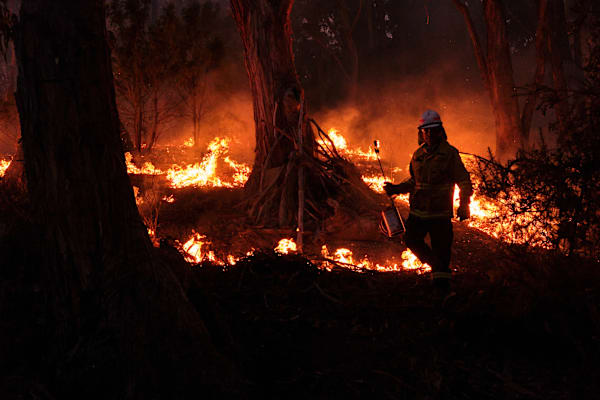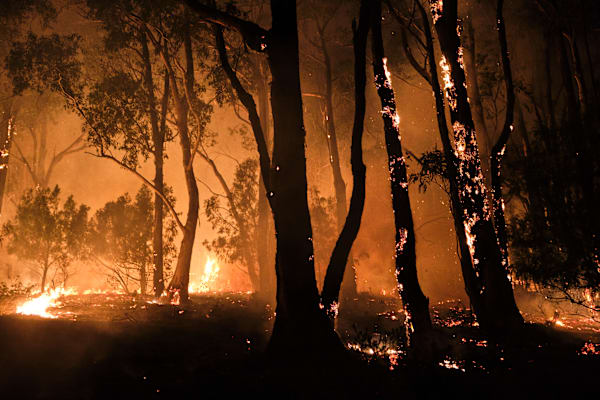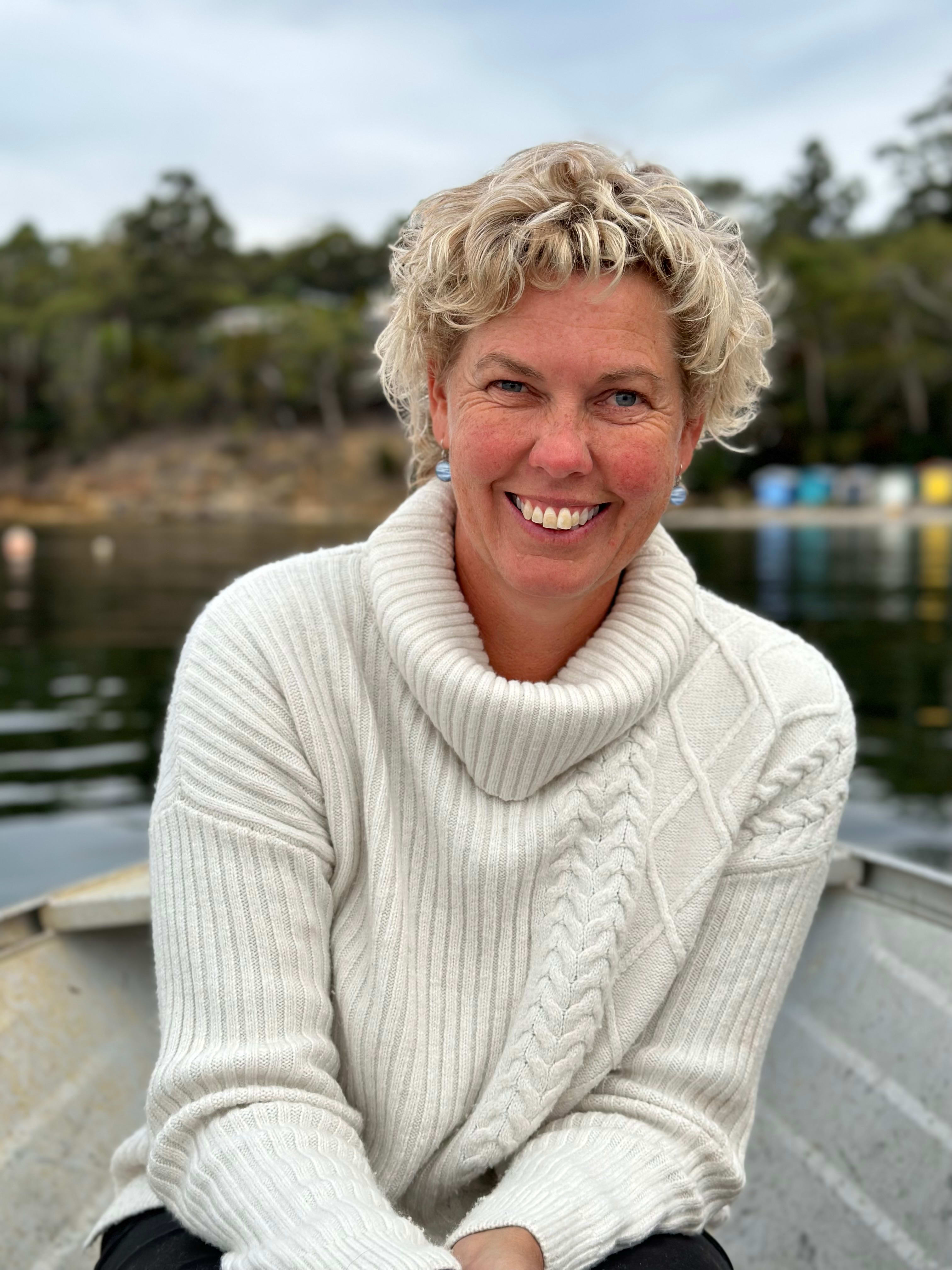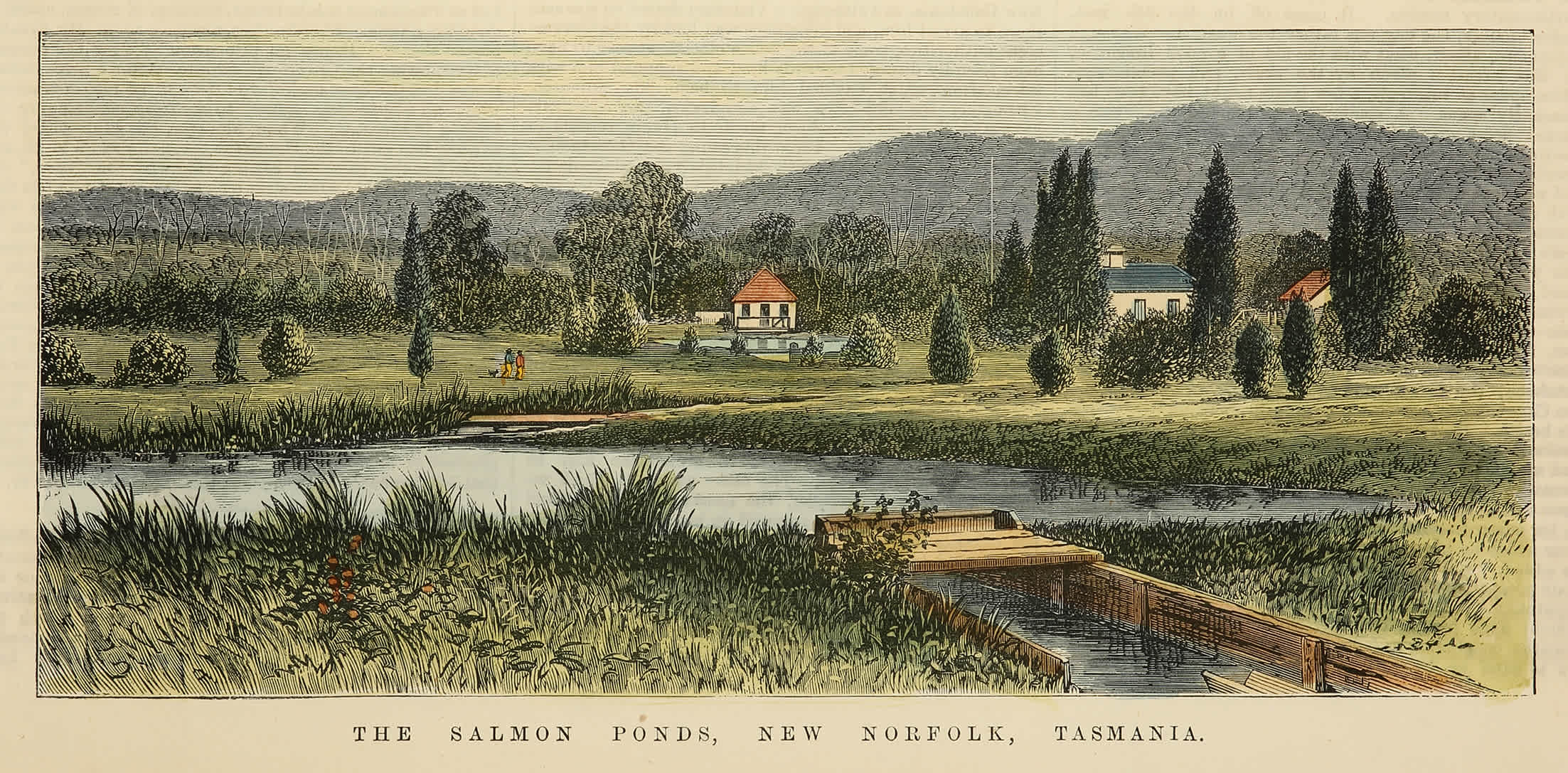A few formerly vertical trunks now lay flat, like carelessly discarded cigars, ash lines on the blackened earth showing where the stricken branches had slowly burned away overnight. Root systems too were still smoking, leaving ghost hollows where chlorophyll highways had once been.
It was always going to happen. Sooner or later, whether by human hand or lightning strike, The Patch would burn. It’s the way of things with eucalypt woodland and forest. When it came, we received notice of it via snail mail and social media. As soon as the autumn weather conditions cooperated, the Fire Service informed us they would conduct a “hazard reduction burn” on a 30-hectare section of our bush.
On the afternoon of ignition, I happened to be on Hobart’s eastern shore, but even from that 20km distance it was impossible to miss the smoke. It rose like an atomic cloud from the slopes of kunanyi; so much smoke from such a small burn.

By the time I got home, I saw that the epicentre of the fire was very close to our house. I wasn’t worried as the fire was uphill from us, and any wind would take it further upslope. Still I went up to watch, at a safe distance, as three or four fireys walked along a boundary, lighting up with driptorches. They had a small firetruck with a watertank and hoses, which they occasionally sprayed on over-enthusiastic flames.
The burn went long into the night, and some of the fire crew stayed to monitor conditions until about midnight. We went to sleep to the muted crackle and fizz of burning bush, our windows shut tight against the smoke. The next morning we walked up and around some of our usual tracks to inspect it for ourselves. In parts it had been a very hot fire, and some of the trees were still burning. A few formerly vertical trunks now lay flat, like carelessly discarded cigars, ash lines on the blackened earth showing where the stricken branches had slowly burned away overnight. Root systems too were still smoking, leaving ghost hollows where chlorophyll highways had once been.
We have walked this bush hundreds of times, and know it intimately. We found the scene depressing, the impact visceral. We were distressed to come across a dying ringtail possum. This smaller relative of the brushtail possum is nocturnal and arboreal, and only comes to the ground reluctantly. This reluctance had this time been its undoing. I feared for the welfare of other nocturnal animals, including the microbats that would now have been going into autumn torpor in tree hollows. The hot burn in parts of the forest could well have caught them unawares in their hollows. We later heard that some eastern barred bandicoots had been found dead.
Of course there were winners from this burn too. For days after the fire the only birds we saw in the burn zone were ravens and currawongs. We watched ravens hopping splay-footed across the blackened ground, probing into holes and beneath the earth, finding various barbecued morsels.
Over the next two days 70mm of rain fell. The loser here was the scorched and unprotected soil, which slooshed down the slope, a charcoal grey sludge. Some of the plants that recover well from fire, notably lomandra and cutting grass, were sprouting within a fortnight of the burn. So too were weeds such as gorse. Eventually some of the other flora will recover, including those orchids that remain underground in autumn. We await with some anxiety the return of the eucalypts.
And we wonder whether some of the burn was too hot even for these fire-adapted species. If the fire has fully crowned, cooking the tree from root to tree-top, those trees may not recover. Others, like some of the silver peppermints weakened by the severity of the burn, have collapsed, or will do so during the winter gales.

So what was this “hazard reduction burn” all about? It seems to me that there were two related purposes. The burn was partly political: a government showing it was doing something about making bushland areas safer from bushfire, especially for coming summers. The burn was also psychological: an attempt to make we who live near bushland feel safer after this burn than we felt before it.
Research suggests that both of these raisons d’etre are open to question. Reports by both the University of Melbourne and the Climate Council show that while reduced fuel loads can significantly modify fire behaviour under benign weather conditions, the same hazard reduction burns will do little to slow a bushfire during extreme fire weather. As the Climate Council put it, “No amount of hazard reduction will protect human lives, animals and properties from catastrophic fires.”
The upshot is this: if we have another catastrophic fire, similar to that experienced in southern Tasmania in 1967, our bush will again burn catastrophically. So any thought that we’ve been made safer by this burn is shaky at best.
Now as I wander through The Patch, other questions arise. Seeing this landscape, this environment, this mosaic of habitats, severely impacted by this fire, I wonder if an uncertain promise of safety has been worth the cost to all of the other plants and animals with which we share this place. Must it always be all about us?
Peter Grant lives in the foothills of kunanyi with his wife. He worked with the Tasmania Parks and Wildlife Service for 24 years as manager of interpretation and education. His passion for the natural world led him to write Habitat Garden (ABC Books) and found the Wildcare Tasmania Nature Writing Prize. More of his writing can be seen at naturescribe.com.
Click here to read more from Peter Grant's column, The Patch.








